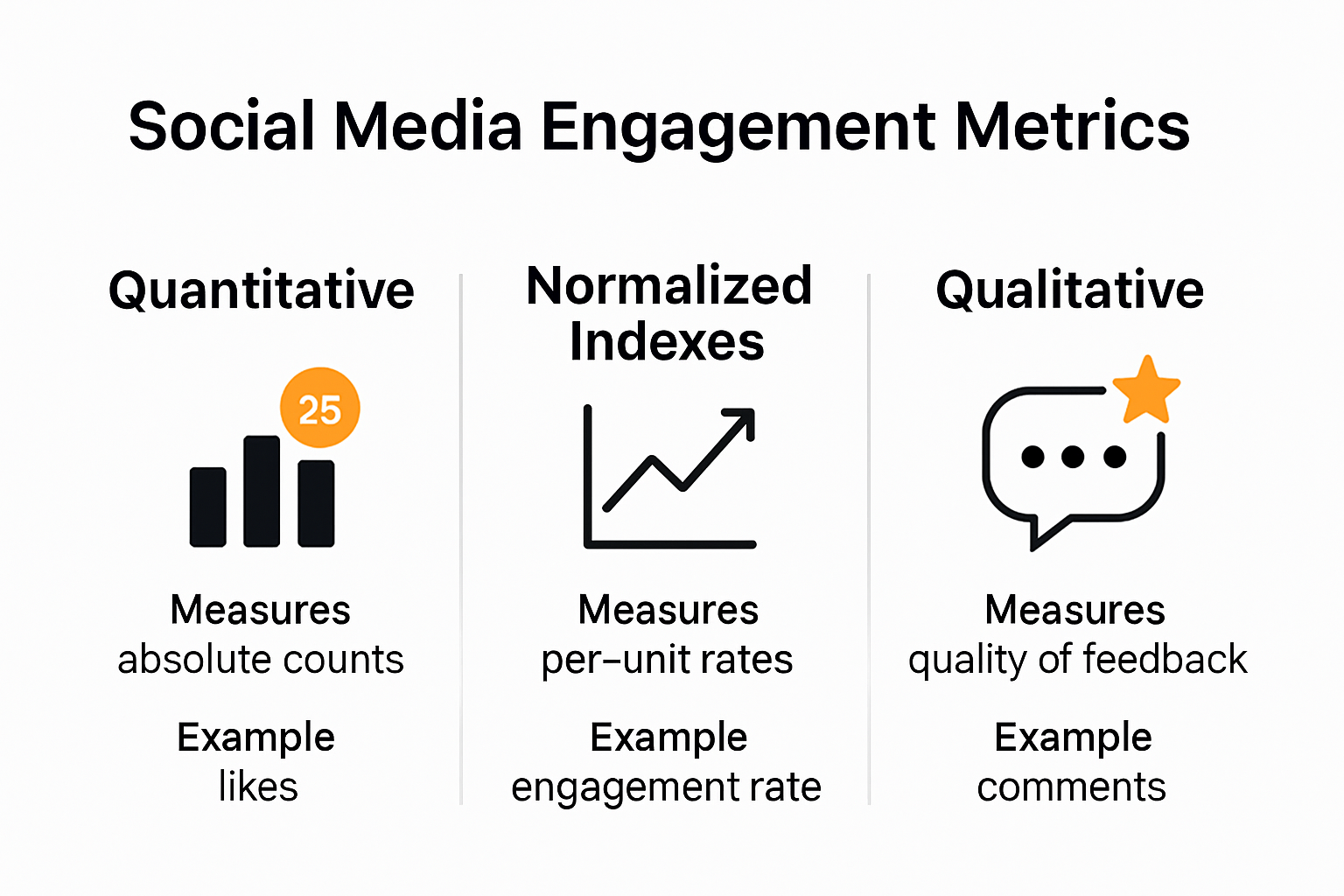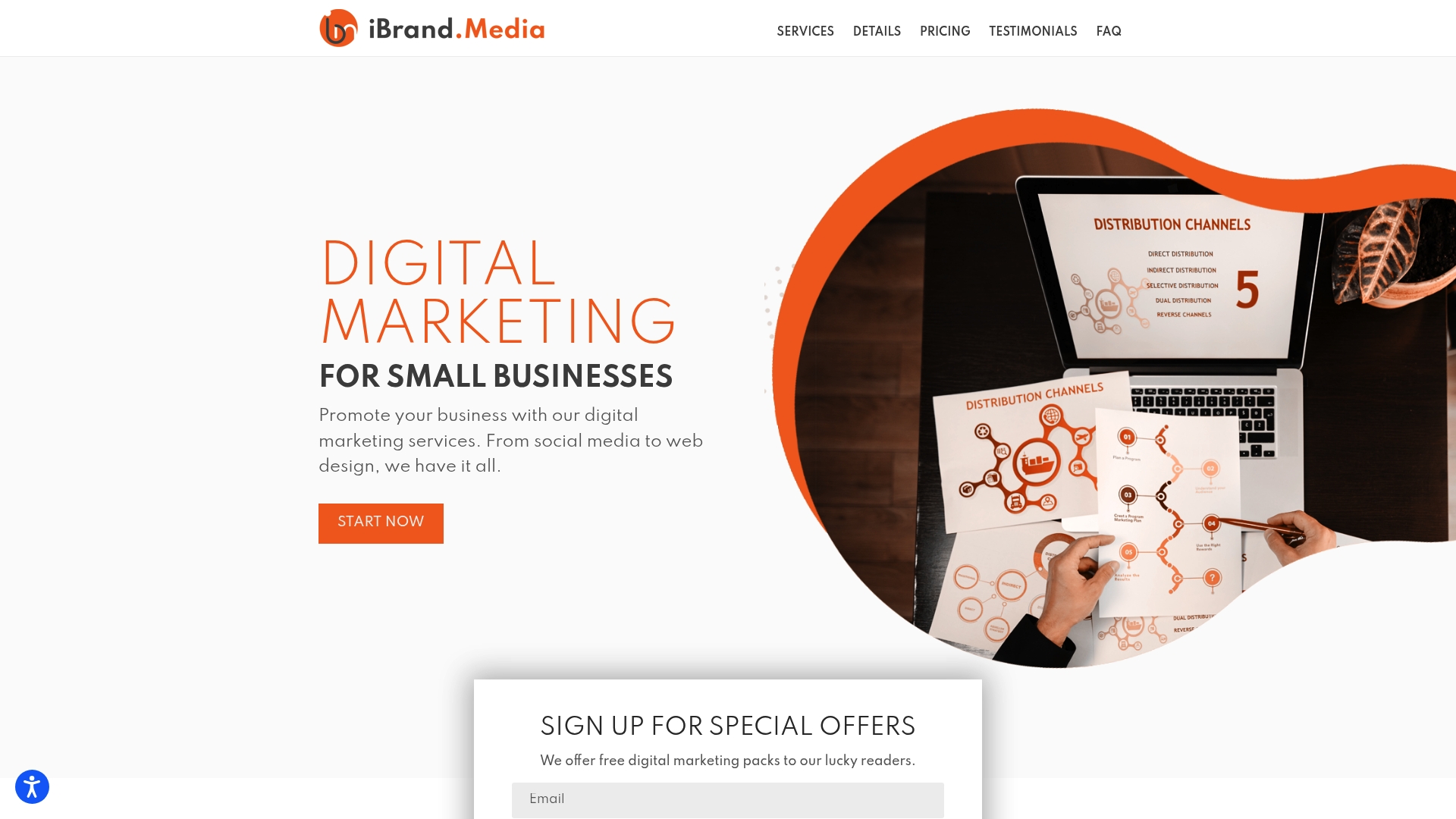
Social media content can make or break your brand’s connection with your audience. Here’s something you might not expect. A single emotionally charged post can deliver 2 to 5 percent more web sales, proving that it’s not polished videos or big budgets that win attention. The real secret is crafting content that feels human enough to stop someone mid-scroll.
Table of Contents
- Understanding Social Media Engagement Metrics
- Creating Content That Sparks Interaction
- Budget-Friendly Engagement Strategies For Local Businesses
- Measuring Results And Adjusting Your Approach
Quick Summary
| Takeaway | Explanation |
|---|---|
| Engagement Metrics Matter | Social media engagement metrics like reach, interactions, and amplification rate are crucial for assessing content effectiveness and guiding strategy. |
| Create Emotionally Resonant Content | Content that evokes strong emotions tends to generate higher engagement levels, making it essential to incorporate emotional triggers in your posts. |
| Leverage Budget-Friendly Strategies | Small businesses can maximize their social media engagement through cost-effective content strategies, such as user-generated content and using free digital tools. |
| Focus on Interactive Content | Increasing engagement can be achieved by crafting interactive content like polls and quizzes that encourage audience participation. |
| Adapt and Optimize Continuously | Regularly reviewing performance data and experimenting with content formats help maintain relevance and enhance audience connection over time. |
Understanding Social Media Engagement Metrics
Social media engagement metrics represent the key performance indicators that reveal how audiences interact with digital content. These metrics go beyond simple view counts, providing deeper insights into audience connection and content effectiveness.
The Core Components of Social Media Engagement
Engagement metrics encompass multiple dimensions of user interaction. According to a systematic literature review, these metrics can be categorized into four primary types:
-
Quantitative Metrics: Direct numerical measurements including likes, comments, shares, and clicks that provide immediate numerical evidence of audience response.
-
Normalized Indexes: Calculated engagement rates that compare interactions against total audience size, offering a proportional view of content performance.
-
Comprehensive Index Sets: More complex measurements combining multiple interaction types to generate holistic performance assessments.
-
Qualitative Metrics: Subjective evaluations analyzing sentiment, emotional responses, and nuanced audience reactions.

Psychological Impact of Engagement Metrics
Engagement metrics are more than statistical data points. Research indicates that higher engagement metrics significantly influence user decision-making processes. For instance, increased likes and comments can serve as powerful social proof, potentially driving purchase intentions for online products and services.
Interestingly, emotional content plays a crucial role in generating engagement. A study analyzing social media posts revealed that emotionally resonant content consistently generates more likes and shares compared to purely informational posts.
For small businesses looking to optimize their social media strategy, understanding these metrics is essential. Learn more about effective social media strategies that can help transform raw data into actionable insights.
Key engagement metrics every business should track include:
- Reach: Total number of unique users who viewed your content
- Interactions: Cumulative likes, comments, and shares
- Amplification Rate: Ratio of shares per post
- Virality Rate: Percentage of people who shared your content relative to total impressions
By understanding these metrics, businesses can craft more targeted, emotionally compelling content that resonates with their specific audience, ultimately driving meaningful digital connections and potential conversions.
To help you quickly compare the different types of social media engagement metrics discussed, here’s a summary table:
| Metric Type | Description | Example Metrics |
|---|---|---|
| Quantitative Metrics | Direct numerical audience interactions | Likes, Comments, Shares, Clicks |
| Normalized Indexes | Interactions relative to audience size | Engagement Rate, Virality Rate |
| Comprehensive Index Sets | Aggregated/combined interaction measurements | Conversation Rate, Amplification Rate |
| Qualitative Metrics | Subjective, sentiment, and emotional response analysis | Sentiment Analysis, Emojis Used |
Creating Content That Sparks Interaction
Social media success hinges on creating content that compels users to stop scrolling and engage. Developing interactive content requires strategic thinking and an understanding of audience psychology.
The Psychology of Shareable Content
Users share content that makes them look good, feel connected, or provide value to their network. Research published in arXiv demonstrates that companies employing a diversified social media strategy can increase web sales by 2 to 5 percent through strategic content that generates repeated platform exposure.
Key psychological triggers for content sharing include:
- Emotional Resonance: Content that evokes strong feelings like surprise, joy, or inspiration
- Social Validation: Posts that make users appear knowledgeable or caring
- Practical Utility: Information that solves problems or offers actionable insights
Crafting Interactive Content Strategies
Successful interactive content goes beyond static posts. It invites audience participation through various engagement mechanisms. Interactive formats like polls, quizzes, live Q&A sessions, and user-generated content challenges can transform passive viewers into active participants.
Consider implementing:
- Story-driven polls that reveal audience preferences
- Behind-the-scenes glimpses of your business operations
- User challenge competitions with branded hashtags
- Expert advice sessions with direct audience interaction
For small businesses seeking to elevate their social media approach, discover advanced engagement techniques that can transform your digital presence.
Technical Considerations for Engagement
Technical elements significantly impact content interactivity. Optimize content for mobile viewing, use high-quality visuals, and ensure quick loading times. Video content with captions, infographics with clear data visualization, and bite-sized information formats tend to generate higher interaction rates.

Remember that authenticity trumps perfection. Users connect with genuine, transparent content that reflects your brand’s unique personality. Experiment with different content types, track performance metrics, and continuously refine your approach based on audience feedback and engagement data.
Budget-Friendly Engagement Strategies for Local Businesses
Local businesses often struggle with limited marketing budgets while needing to maintain an effective social media presence. Strategic approaches can help maximize engagement without breaking the bank.
Leveraging Cost-Effective Content Creation
User-generated content represents a powerful and affordable engagement strategy. According to research from digital marketing experts, encouraging customers to share their experiences can significantly expand organic reach without additional marketing expenses.
Key low-cost content strategies include:
- Customer Testimonial Spotlights: Share authentic customer stories and experiences
- Behind-the-Scenes Glimpses: Show your business’s human side through simple smartphone videos
- Local Community Highlighting: Feature local events, partnerships, and community involvement
Maximizing Free and Affordable Tools
Local online marketing strategies can be dramatically improved by utilizing free or low-cost digital tools. Platforms like Canva for graphic design, Mailchimp for email campaigns, and Google Business Profile offer robust marketing capabilities without significant financial investment.
Critical free tools for local businesses include:
- Canva: Create professional graphics
- Hootsuite: Manage multiple social media platforms
- Google Analytics: Track website and social media performance
- Buffer: Schedule posts across platforms
To better understand which free or low-cost tools are recommended for local businesses, here’s a concise comparison table of their primary uses:
| Tool | Primary Use | Cost |
|---|---|---|
| Canva | Graphic creation | Free/Paid |
| Hootsuite | Social media management/scheduling | Free/Paid |
| Google Analytics | Performance tracking (web/social) | Free |
| Buffer | Social media scheduling | Free/Paid |
Strategic Audience Engagement Techniques
Engagement doesn’t require substantial financial resources. Small business marketing research emphasizes the importance of daily, meaningful interactions with your audience.
Effective low-cost engagement strategies include:
- Responding promptly to comments and messages
- Running community-focused contests
- Creating interactive polls and surveys
- Hosting live Q&A sessions
- Collaborating with local micro-influencers
Consistent, genuine interaction matters more than expensive production. Small businesses can build strong online communities by demonstrating authenticity, local commitment, and responsive communication.
Remember that social media engagement is about quality over quantity. Focus on creating meaningful connections with your target audience, sharing valuable content, and maintaining a consistent online presence. By implementing these budget-friendly strategies, local businesses can effectively increase their social media engagement without significant financial investment.
Measuring Results and Adjusting Your Approach
Successful social media strategies require continuous evaluation and adaptation. Understanding how to effectively measure engagement and interpret results is crucial for ongoing digital marketing success.
Comprehensive Engagement Metrics Framework
Research from a systematic literature review reveals four critical categories of social media engagement metrics:
- Quantitative Metrics: Direct measurements like likes, comments, and shares
- Normalized Indexes: Engagement rates calculated per follower
- Comprehensive Index Sets: Advanced metrics like conversation and amplification rates
- Qualitative Metrics: Sentiment analysis and emotional response tracking
According to the University of Houston, the engagement rate calculation (total engagements divided by total impressions) provides crucial insights into content performance.
Strategic Performance Analysis Techniques
Explore advanced digital marketing planning to transform raw data into actionable strategies. Key performance analysis techniques include:
- Monthly comparative analysis of engagement metrics
- Segment performance by content type
- Track audience demographic interactions
- Identify peak engagement times
- Compare performance across different social platforms
A detailed study in behavioral research suggests categorizing metrics into:
- Count-Based Metrics: Number of posts and interactions
- Time-Based Metrics: Duration of audience engagement
- Text-Analysis Metrics: Sentiment and emotional content evaluation
Adaptive Optimization Strategies
Successful social media management is not about perfect performance but continuous improvement. Develop a flexible approach that allows rapid adjustments based on performance data.
Recommended optimization strategies:
- Conduct weekly performance reviews
- Experiment with content formats
- Adjust posting schedules based on engagement patterns
- Refine targeting based on demographic interaction data
- Create content inspired by top-performing previous posts
Remember that social media algorithms and audience preferences evolve rapidly. What works today might not be as effective tomorrow. Maintain a curious, experimental mindset. Regularly challenge your assumptions, test new approaches, and be willing to pivot your strategy based on concrete performance data.
By implementing a data-driven, adaptive approach to social media engagement, businesses can create more resonant content, build stronger audience connections, and achieve more consistent digital marketing success.
Frequently Asked Questions
What are the key metrics for measuring social media engagement?
Key metrics for measuring social media engagement include reach, interactions, amplification rate, and virality rate. These help assess how well your content is resonating with your audience.
How can I create content that sparks engagement on social media?
To create engaging content, focus on emotional resonance, practical utility, and social validation. Use interactive formats like polls, quizzes, and behind-the-scenes videos to encourage participation.
What are budget-friendly strategies for increasing social media engagement?
Budget-friendly strategies include leveraging user-generated content, utilizing free digital tools, and fostering community interaction through local events and contests.
How often should I measure social media engagement and adjust my strategy?
You should measure social media engagement regularly, ideally on a monthly basis. Use performance data to identify patterns and make necessary adjustments to your content strategy to enhance results.
Ready to Turn Engagement Into Real Business Growth?
Are you still struggling to measure up against ever-changing social platforms, even after learning the proven tips for boosting social media engagement in 2025? The real pain comes from turning likes, shares, and interactions into actual customers and sales. Businesses want more than just high numbers—they want results that build revenue and loyalty. You have seen how emotionally resonant and interactive content can drive performance, but implementing these strategies effectively can be challenging without the right support and tools. Explore our Uncategorized Resources to see practical examples and new solutions for your brand.

Stop letting opportunities pass by while your competitors win attention and sales online. Discover how ibrand.media delivers custom digital marketing campaigns for small and local businesses that want true engagement and tangible growth. Start with a free strategy session or request a tailored plan today and see the difference professional social media management makes to your bottom line.
Recommended
- How Social Media Works for Small Businesses in 2025 | Ibrandmedia
- Social Media Marketing for Businesses: Strategies That Work in 2025 | Ibrandmedia
- Practical Social Media Marketing Tips for Small Business Owners 2025 | Ibrandmedia
- Social Media Management Basics for Small Business Owners 2025 | Ibrandmedia
- Social Media for Home Services: Proven Strategies for 2025 | Ibrandmedia
- Top Ways to Promote Your Business in 2025: Proven Strategies for Local Growth | Ibrandmedia

Recent Comments